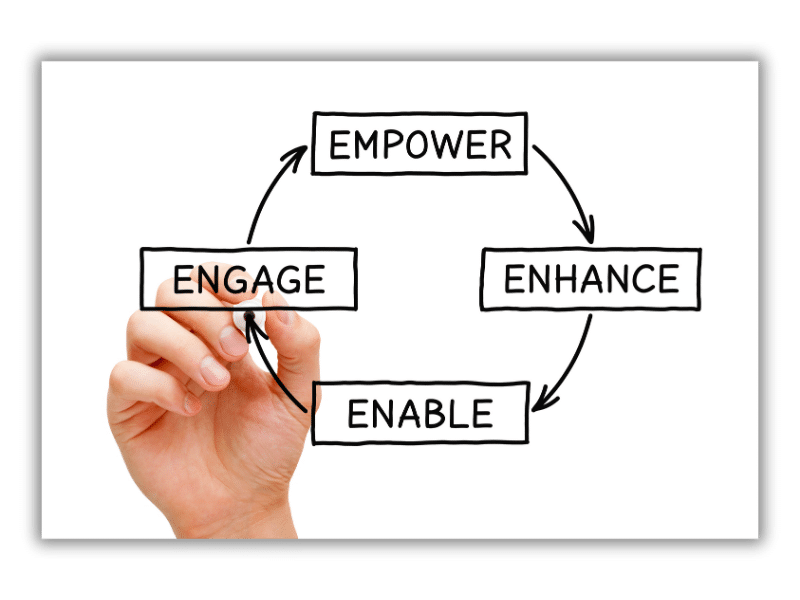9 Tips for Productive and Efficient Zoom and Microsoft Teams Virtual Meetings
Even as businesses reopen office space, the future of the in-person meetings that existed pre-COVID is doutbtful. An astonishing 51% of Fortune 500 CEOs say that business travel at their companies will never return to pre-pandemic levels, with an additional 30% expecting at least 18 months to return to previous levels. With offices empty and travel limited, the age of the virtual meeting has begun in earnest.
As companies adapt to exclusively virtual meetings, the overlooked benefits of in-person communication and the hidden shortcomings of virtual meetings become evident. Teams spending hours in virtual meetings a day may find themselves more exhausted than after a day of in-person meetings. The good meeting practices developed in-person may not translate to meetings done over video.
To state the obvious, communicating with a screen is not the same as communicating with a person, no matter how high-def their webcam is. While this means virtual meetings require new practices and procedures to stay efficient, it doesn’t mean your team cannot be just as productive, if not more so, while utilitizing video meeting functionality with Zoom or Microsoft Teams.
Let’s break down 9 key strategies for productive and efficient Zoom and Microsoft Teams meetings.
Stay Muted Unless Speaking and (Almost) Always Keep Video On
The best way to encourage attentiveness during virtual meetings is to encourage all attendees to keep their video on at almost all times. A key exception is in the case of an interruption. If meeting attendees experience the now commonplace childcare crisis, house emergency, or bathroom trip, they should turn off their video until they can return uniterrupted. This practice encourages active attention and helps meeting facilitators gauge participant reaction and engagement.
A corrolary of this is that participants should stay muted unless they are currently speaking. In Zoom, holding the space bar temporarily unmutes the speaker (like a walkie talkie), making it easy to jump into speak only when necessary.
Assign a Meeting Leader and Administrator
Maintaining order in a virtual meeting of more than a few participants requires discipline and order. Appointing a Meeting Leader to direct the flow and who is speaking prevents participants attempting to speak over eachother. While participants should be asked to stay muted and unmute themselves when they have to speak, multiple people attempting to speak at the same time makes comprehension impossible. Additionally, for sufficiently large meetings, assigning an meeting adminstrator, in addition to the meeting leader, can be helpful to manage the technical aspects of the meeting like muting accidentally unmuted participants and monitoring waiting rooms and attendance if necessary.
Have a Structure
Productive Teams or Zoom meetings requires a clear agenda and objectives agreed upon before the meeting begins. This information should be sent out prior to the meeting to guide discussion.
For regular team meetings, we recommend the Huddle format, where every participant shares relevant updates, their top priority for the day, and any work requiring assistance from other team members. This format also encourages participants to record their updates in written form incase any team members cannot attend the meeting.
Check out Virtual Zoom and Teams Backgrounds!
Encourage Productive Conflict
Generally, meetings serve one of two critical functions: sharing information across teams and adjudicating important decisions. For the first category, structure and purpose are critical. For decision-making meetings, productive conflict must be front and center. Engaging in productive conflict while virtual is likely a new skill for leaders, but vital for building true consensus. As Patrick Lencioni famously states in Five Dysfunctions of a Team, great teams “do not hesitate to disagree with, challenge, and question one another, all in the spirit of finding the best answers, discovering the truth, and making great decisions.”
Leaders should be sure to pause during virtual meetings to ask the questions Lencioni outlines for productive conflict in Death by Meetings like “Who has another perspective?” and “What’s not going well?” . This helps spur discussion and productive conflict, keeping the team engaged while avoiding “nodding head” syndrome.
Take things off line
Keeping Teams or Zoom meetings efficient and productive means staying focused on the topic at hand. Any issues raised that don’t need to be resolved to achieve the meeting’s objective should be put in a meeting “parking lot” for follow up after the meeting has ended.
Use the Chat
One strategy for sharing information and reactions without disrupting communication flow is to utilize the chat feature. Messaging responses or questions allows speakers to address feedback without interruption. In a meeting with many participants, using a direct message chat bertween individuals allows for side conversations or discussions that do not interrupt meeting flow.
Keep It Short
Virtual meetings, like in-person meetings, can cause fatigue. Behavioral Psychologists have noted that during in-person meetings, we easily process non-verbal cues such as facial expression, tone of voice, and distance between speakers. During virtual meetings, we work harder to interpret non-verbal cues to infer emotion. This leads to “Zoom fatigue”, the feeling of emotional exhaustion felt after long periods in virtual meetings.
The remedy is efficient, shorter meetings that focus only on information relevant to the whole group. Aiming for 15 minutes for team huddles and 30 minutes for 1 on 1 checkins is a start. For longer meetings like strategic planning sessions, taking frequent breaks and longer periods for lunch can help prevent fatigue in meeting attendees.
Utilize the Screen Share
Another way to prevent “Zoom fatigue” is to utilize the screen share. Using visual aids has long been a presentation best practice, and using them to facilitate meetings also helps. Allowing participants to focus primarily on the material being presented and not the non-verbal cues of the speaker can reduce fatigue and ensure focus.
Carve out five minutes of intro time
Building in a brief window at the begining of virtual meetings for attendees to situate themselves, ensure their technology is working, and perform any necessary updates can help ensure meetings begin efficiently. This time is great to break the ice, build rapport among participants, and establish any ground rules for the meeting. Ensuring everyone starts the meeting agenda prepared and focus helps the success of the meeting.
Looking to add some flair to your team’s meetings? Check out our curated selection of virtual meeting backgrounds for any occasion!
DOWNLOAD Virtual Meeting Backgrounds!





